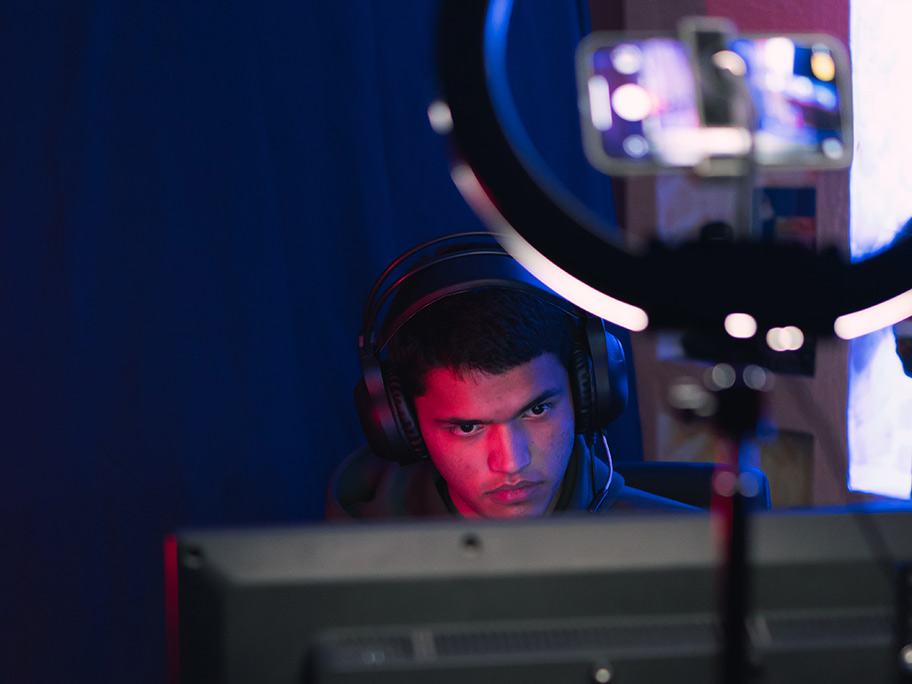
Photo: Fausto Sandoval, Unsplash | https://unsplash.com/@eduusaez
Journalists are creators now, and that’s a good thing
Journalism’s hostility is understandable, but our denial is not.In 2009, the former editor-in-chief at Thomson Reuters, David Schlesinger, described journalism as one of the great self-declared professions. He wrote, “I am a journalist because I said I was one more than two decades ago and have spent the years since working on my abilities. I am not one because I am somehow anointed with a certificate or an exam result. Journalism is ideally designed for democratisation.”
We’re living in a remarkable time when reporters no longer have to win an editor’s approval to publish a story, reach an audience, and get paid. In fact, anyone can technically do it, which is why the distinction between professional journalists (people employed by news organizations) and creators (individuals producing journalistic content online) no longer exists.
Our current state of affairs shouldn’t be a surprise. Since the mid-2000s, we’ve documented the proliferation of bloggers, YouTube creators, and social media influencers on Instagram, Snapchat, and now TikTok, with measured skepticism, if not outright disdain. In 2009, the idea of newsrooms publishing “citizen journalism” and “user-generated content” were hotly debated issues. In 2012, when Instagram came onto the scene, photojournalists penned scathing columns criticizing “app photographers” for creating artistic masterpieces without learning the tools of the trade. In retrospect, these industry terms — citizen journalism, UGC, app photographers — revealed our collective trepidation. They served to differentiate the role of journalists from everyday citizens, as if we were never both.
Many of us feel that journalism is a calling. We consider original reporting to be a public service, a job that is essential to saving democracy. Like a doctor, teacher, or firefighter, we imbue our work with such a sense of honor and ethics that it’s often unfathomable to identify with anything else. But time and time again, emerging technologies have pushed the news industry in unpredictable directions, reminding us that we are no longer commanders of our own destiny, but rather anxious passengers along for the ride. Our hostility is understandable, but our denial is not.
In 2017, nearly 17 million Americans earned a total of $6.8 billion dollars by posting their personal creations on platform companies. Over the years, that number has undoubtedly grown as almost everyone with an Internet connection communicates, learns, works, or plays on a digital platform. Whether it’s Amazon Publishing, Pinterest, or Twitch, these platform companies are developing the tools, and progressively the rules, for how we conduct ourselves online. If we’re not building these platforms, then we’re players within them, and in the ever-expanding passion economy, journalists are creators like everyone else.
It partly explains why the public’s trust in traditional media is at an all-time low while digital news consumption is at an all-time high. If people are trusting legacy news organizations less and less, where else are they turning to for news and information?
The numbers speak for themselves:
- On Inauguration Day, CNN beat every other television network by drawing 7.7 million total viewers that day, while CNBC’s Inauguration live stream on YouTube peaked at 10.2 million views and the #inauguration2021 hashtag on TikTok garnered 215.1 million views.
- In terms of their direct access to everyday people, last year, TikTok joined the “1 billion monthly active user (MAU) club alongside Facebook, Instagram, Messenger, WhatsApp, YouTube and WeChat” and is on track to hit 1.2 billion MAUs this year. The New York Times, on the other hand, boasted a record 7 million digital subscribers in 2021 and aims to hit 10 million subscribers in 2025.
Journalism’s ability to reach eyeballs and engage people’s attention matters. Digital subscriptions might be helping legacy news organizations survive, but paywalls aren’t addressing the massive amounts of people who are seeking their daily news and information on YouTube, Snapchat, Instagram, TikTok, and the like. There is a vacuum of factual reporting on these platforms, and this is where journalists and creators can learn a lot from one another.
Creators are self-made storytellers and entrepreneurs. They began by mastering a platform’s features to develop their own brand of content. They didn’t raise venture capital or apply for foundation funding to kick off their journey, and success didn’t strike overnight. The creator path is an exercise in persistence, and their profiles are littered with failed creative experiments. Isabelle Boemeke is a perfect example.
Dressed in funky, colorful outfits, Boemeke’s TikTok videos riff off of personal wellness and makeup routine tropes to sneak in facts about nuclear energy and carbon emissions. Her videos use TikTok’s augmented reality filters, sound effects, and editing features to create bizarrely captivating content about abstract topics like climate change. Her first 19 videos average between 1 and 2,000 views, but her latest TikTok reached 229,000 views. Boemeke’s content looks more like music videos than legacy journalism, but she’s informing her 19,000 followers (and counting) about a complex issue that they may not have learned otherwise.
Finally, creators are incentivized to be collaborative. Michael DiBenigno is a TikTok’er and cofounder of an augmented reality startup called Flow Immersive. Last November, he teamed up with fellow TikTok’er Dr. Kat Wallace, an epidemiologist and adjunct professor at the University of Illinois Chicago, to produce a video about the spread of Covid in America. Their video generated 2.2 million views, 323,000 likes, and 3,500 comments. Unlike lone reporters who were trained to hunt for scoops and break news before their competitors, creators optimize for originality and creativity. Nineteen minds are better than one, as they say, which is why collab houses are the physical embodiment of how much YouTubers and TikTok’ers prefer to swap ideas and promote one another.
It’s worth noting that the Washington Post’s graphic reporter Harry Stevens also produced a hugely successful data visualization explaining the spread of Covid, but therein lies the point. We now live in a world in which TikTok’s algorithm operates as the homepage editor and people like DiBenigno, Wallace, and Boemeke are one of many journalists providing news and information to millions of people. These creators aren’t employed by legacy newsrooms or graduates from prestigious journalism schools, their stories didn’t go through a traditional editing process, and they never have to. Instead, creators have the freedom to focus on what matters most: to cultivate a community of people around their work. If they do that well, monetization opportunities follow suit.
Top creators not only master a platform and grow a following, but they’re also given a crash course in how to monetize their content. YouTube was a pioneer in supporting YouTubers and they have an online Creator Academy that’s jammed with creator resources. TikTok recently launched a Creator Fund and Snapchat is paying millions of dollars directly to creators on their platform.
Becoming a full-time creator isn’t suitable for every journalist, but an entrepreneurial mindset is necessary for all. Legacy journalism institutions are beginning to offer training to journalists pursuing the creator route, but we’re missing the greater opportunity to engage creators who are interested in producing journalistic content.
Becoming a full-time creator isn’t suitable for every journalist, but an entrepreneurial mindset is necessary for all. Legacy journalism institutions are beginning to offer training to journalists pursuing the creator route, but we’re missing the greater opportunity to engage creators who are interested in producing journalistic content. Our honorable, but parochial definition of “quality journalism” not only prevents us from reaching the massive amount of people on digital platforms, but we’re also failing to learn from and engage the next generation of media producers.
One of the few organizations that are responding to the journalist-turned-creator movement is CUNY’s Craig Newmark Graduate School of Journalism. It offers an online Entrepreneurial Journalism Creators Program specifically geared towards journalists who want to support independent projects. Anita Zielina, the director of strategic initiatives, explains why the graduate school shifted from supporting founders who wanted to launch news companies to independent journalists who were working on their own podcast, newsletter, or video series.
“If you’re really looking to build a scalable organization you need an influx of angel capital, philanthropic funding, or VC funding,” says Zielina. “Many of the startups I see die at an early stage because they don’t have the seed capital to make it to the next.” The lack of a funding pipeline in journalism is a critical challenge.
But, Zielina says, “There is a new generation of entrepreneurs who are starting niche, micro ventures, or passion projects to earn a living. I’m optimistic because there’s a lot happening in the creator ecosystem.”
Jeremy Gilbert, the Knight Chair for Digital Media Strategy at Medill and the former director of strategic initiatives at the Washington Post, is also teaching his students how journalism functions as a business. Managing a profit and loss statement, churn, sponsorships, and a marketing budget are increasingly part of the curriculum at Medill.
“Everyone that graduates from journalism school needs to know what it means to be an entrepreneur,” says Gilbert. “They’ll be more ready to pursue their goals regardless of where they land. In their mid-careers, they’ll be able to step into leadership positions, and when they’re leading a team or organization, they’ll have a better sense of how the media business works.”
Then, there’s the value journalists can offer to creators. The news industry has an incredible opportunity to teach platform-savvy storytellers how to conduct fair and thorough interviews, how to file a FOIA request, how to scrape and mine data for anomalies, how to produce explanatory graphics, how to vet your sources and verify photoshopped images, and the list goes on and on. Johnny Harris, a former Vox.com video journalist who became a full-time creator, recently published a YouTube video called “7 things I’ve learned about journalism in 7 years of being a journalist.” The video has been viewed more than 127,000 times and is absolutely worth the watch. He reminds us that some of journalism’s most defining traditions, i.e. finding fact-based evidence to support our assertions, can find a home in the world of creators.
In the eyes of platforms and people, journalists and creators are one and the same. What many journalists once coined as “user-generated content” are now stories that regularly educate, entertain, and inspire billions of people around the world. As our media ecosystem rapidly evolves, it would be a mistake for the news industry to double down on traditional standards of “quality journalism” when people on platforms have already redefined what quality news and information means to them. Democratic appeals to save journalism continue to reek of fear and self-preservation because we refuse to appreciate how technology has systematically democratized our craft. Creators are thriving on the frontier of this tidal shift, and together, journalists can thrive too.
Author’s note: My next column will explore the clash of monetization strategies, culture, and ethics between journalists and creators. Thanks to Helen Bui and Michelle Ye Hee Lee for their thought leadership.

Comments